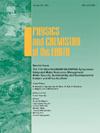通过对现有模型的比较分析,开发和评估马拉维特定地点的蒸散模型
IF 3
3区 地球科学
Q2 GEOSCIENCES, MULTIDISCIPLINARY
引用次数: 0
摘要
在发展中国家,与高效灌溉用水管理相关的当地参考蒸散量信息非常缺乏。这影响了确定灌溉作物需水量的准确性,因为大多数现有的参考蒸散模型都是基于经验的,除非根据当地条件进行校准,否则准确性较低。粮农组织的彭曼-蒙蒂斯方程已被证明可用于估算全球不同环境下的参考蒸散量。然而,由于气候数据收集和管理能力不足,其密集的数据输入要求阻碍了该模型在发展中国家的应用。因此,有必要开发数据密集程度较低的特定地点模型。为了开发针对具体地点的蒸散模型,进行了一项研究,对 Kharrufa、Linacre、Hargreaves Original 和 Hargreaves Modified 经验模型在雨季和旱季的表现进行了比较分析。每个模型的性能都与被视为标准模型的粮农组织彭曼-蒙蒂斯模型进行了比较。选出了均方根误差 (RMSE)、均方偏差 (MBE) 和判定系数 (R2) 均令人满意的模型。通过回归分析对所选模型进行了统计分析。从旱季 1.02 毫米/天的均方根误差和-0.34 至 0.8 的均方根误差可以看出,卡鲁法模型的性能令人满意。然而,该模型对雨季参考蒸散量的估算不太准确(均方根误差为 2.18 毫米/天,MBE 为 1.03 至 2.13)。研究建议在研究地点的旱季使用 Kharrufa 模型,而在雨季使用可能需要进一步研究,以确定该模型的可用性和可靠性。本文章由计算机程序翻译,如有差异,请以英文原文为准。
Development and evaluation of site-specific evapotranspiration models in Malawi through a comparative analysis of existing models
Locally based information on reference evapotranspiration pertinent to efficient irrigation water management is scarce in developing countries. This compromises the accuracy in determining irrigation crop water requirements since most existing reference evapotranspiration models are empirically based and less accurate unless calibrated to local conditions. The FAO Penman-Monteith equation has been proven to estimate reference evapotranspiration for different environments worldwide. However, its intensive data input requirements impede utilization of the model in developing countries due to inadequate climate data collection and management capacities. Therefore, a need existed to develop site-specific models that are less data intensive. A study was conducted aimed at developing site-specific evapotranspiration models using comparative analysis of the Kharrufa, Linacre, Hargreaves Original and Hargreaves Modified empirical models during the wet and dry season. Performance of each model was compared with the FAO Penman-Monteith model, regarded as the standard model. The models whose Root Mean Square Error (RMSE), Mean Bias Error (MBE) and coefficient of determination (R2) were satisfactory were selected. The selected models were developed statistically through regression analysis. Performance of the Kharrufa model was satisfactory comparatively as observed from its RMSEs of 1.02 mm/day and MBE -0.34 to 0.8 for the dry season. However, the model less accurately estimated reference evapotranspiration during the wet season (RMSE 2.18 mm/day and MBE 1.03 to 2.13). The study recommends the use of the Kharrufa model in the study locations in dry seasons while utilization in wet season may require further studies to ascertain the model's useability and reliability.
求助全文
通过发布文献求助,成功后即可免费获取论文全文。
去求助
来源期刊

Physics and Chemistry of the Earth
地学-地球科学综合
CiteScore
5.40
自引率
2.70%
发文量
176
审稿时长
31.6 weeks
期刊介绍:
Physics and Chemistry of the Earth is an international interdisciplinary journal for the rapid publication of collections of refereed communications in separate thematic issues, either stemming from scientific meetings, or, especially compiled for the occasion. There is no restriction on the length of articles published in the journal. Physics and Chemistry of the Earth incorporates the separate Parts A, B and C which existed until the end of 2001.
Please note: the Editors are unable to consider submissions that are not invited or linked to a thematic issue. Please do not submit unsolicited papers.
The journal covers the following subject areas:
-Solid Earth and Geodesy:
(geology, geochemistry, tectonophysics, seismology, volcanology, palaeomagnetism and rock magnetism, electromagnetism and potential fields, marine and environmental geosciences as well as geodesy).
-Hydrology, Oceans and Atmosphere:
(hydrology and water resources research, engineering and management, oceanography and oceanic chemistry, shelf, sea, lake and river sciences, meteorology and atmospheric sciences incl. chemistry as well as climatology and glaciology).
-Solar-Terrestrial and Planetary Science:
(solar, heliospheric and solar-planetary sciences, geology, geophysics and atmospheric sciences of planets, satellites and small bodies as well as cosmochemistry and exobiology).
 求助内容:
求助内容: 应助结果提醒方式:
应助结果提醒方式:


